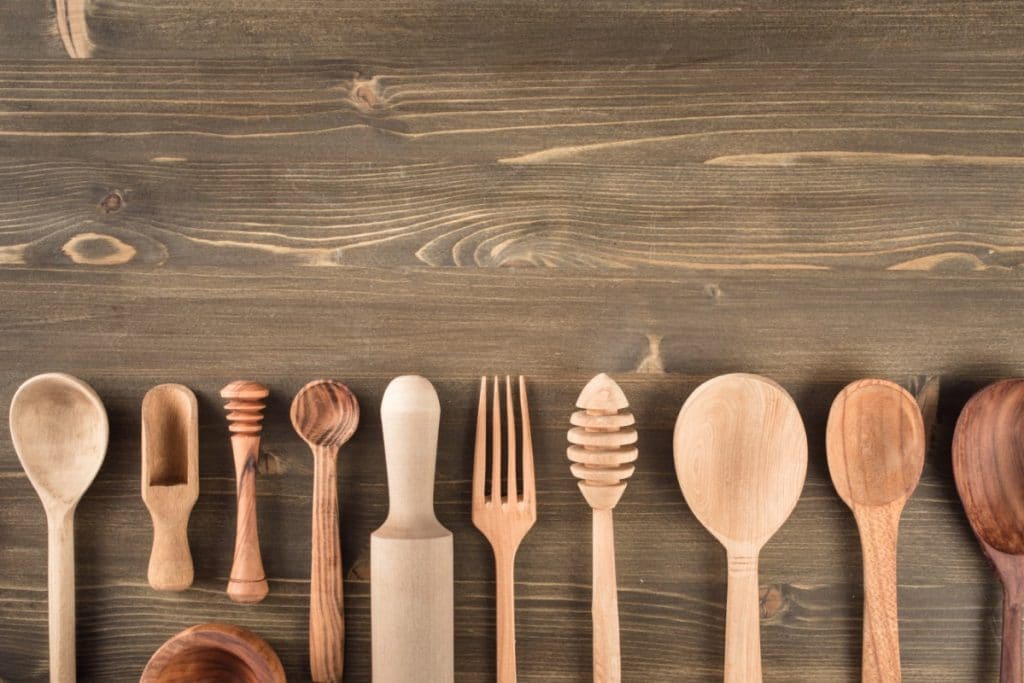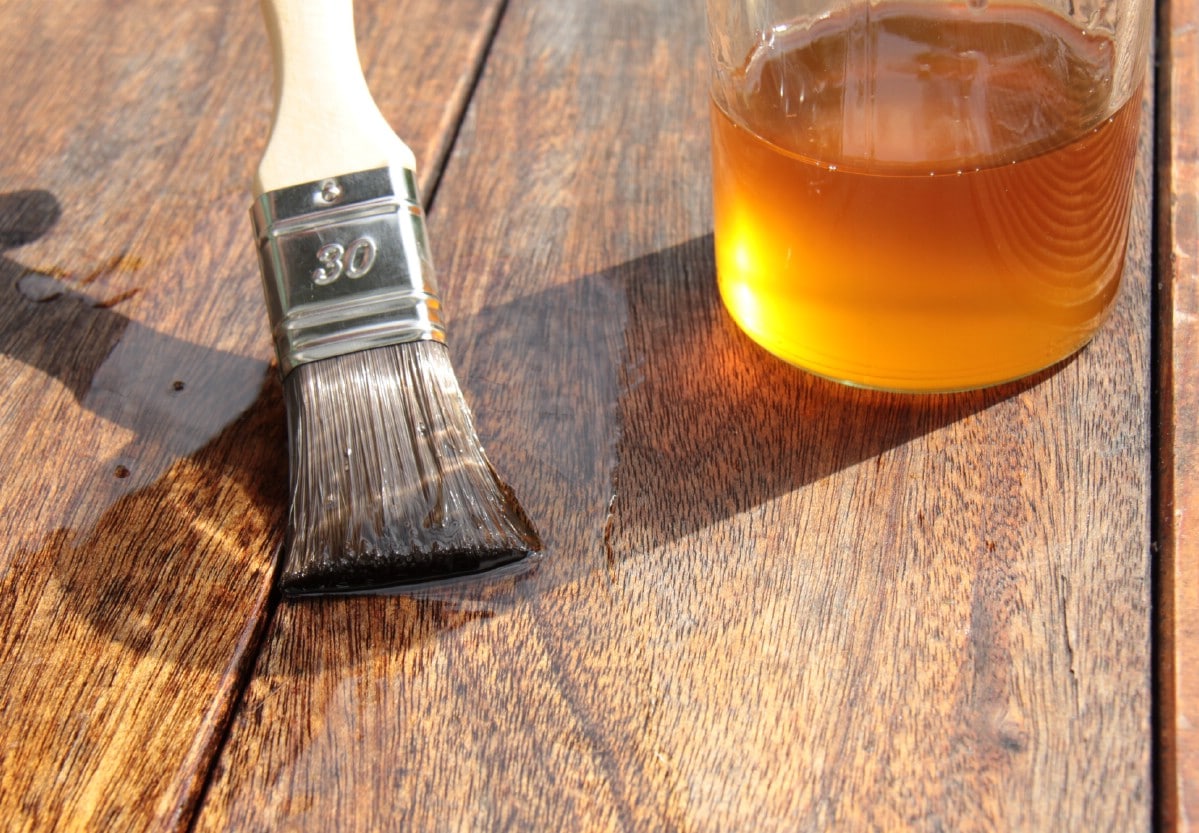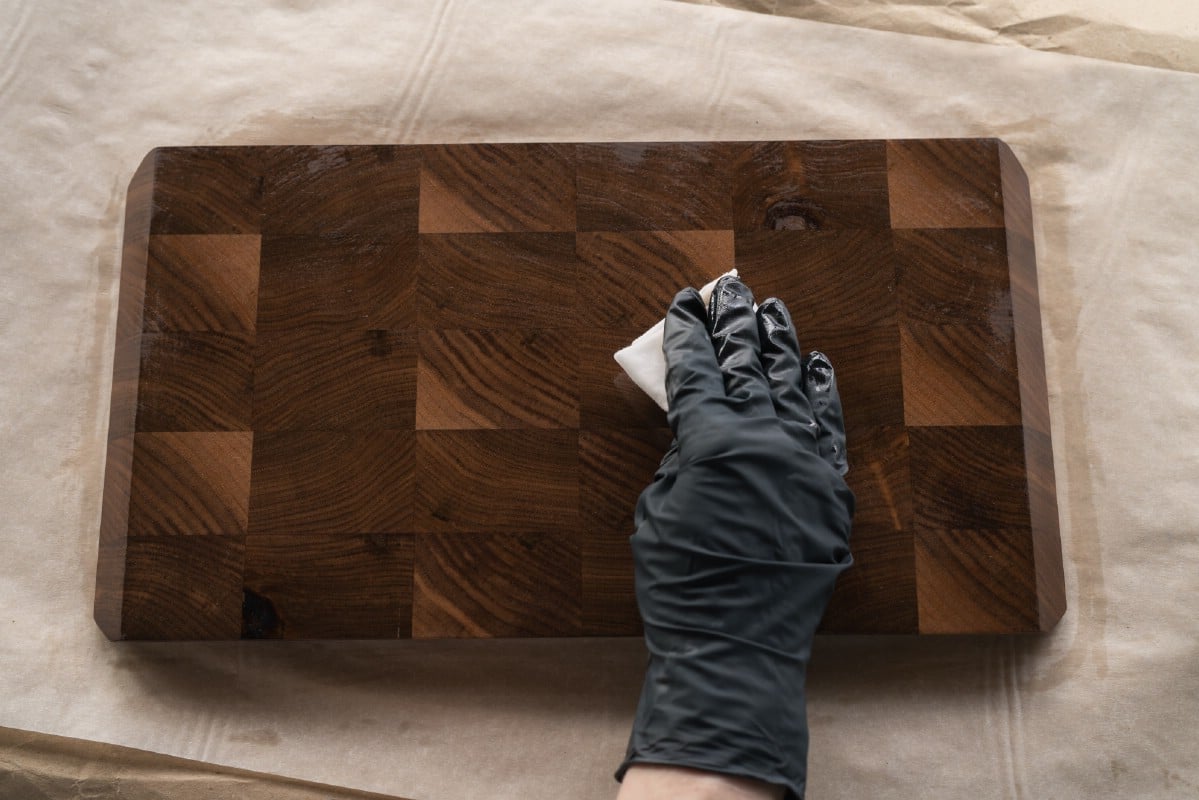The durability and beauty of wood make it an attractive material for bowls, butcher blocks, and other items used to serve or prepare food. Wood also tends to be less prone to harbor bacteria than are some other materials such as plastic.

Finishes can enhance the beauty and extend the useful life of wood. Water-repellent finishes will reduce the effects of moisture. When wood soaks up water, it swells; when it dries out, it shrinks. If the wood dries out rapidly, its surface dries faster than the inside, resulting in cracks and checks (lengthwise separation of wood fibers).
Finishes that repel water will reduce the effects of brief periods of moisture (washing) and repel liquids, making the wood easier to clean. Wood salad bowls, spoons, forks, and other utensils used for food service need a finish that also resists abrasion, acids, and stains. Finished wood countertops are less likely to show stains, such as those from grape juice or other acidic juices.
There are two types of finishes, film-forming and penetrating. Finishes that form a film on wood, such as varnish, lacquer, and shellac, are also called coating finishes. Although the film protects the wood, it eventually chips, peels, or cracks.
Penetrating finishes come in two types, drying oils and nondrying oils.
Drying Oils
Drying oils penetrate the wood and harden the material. They include linseed, tung, and diluted varnish. Also called wood sealers, drying oils are one of the most satisfactory finishes for wood surfaces. They reduce water absorption and make the surface easy to clean and resistant to scratches.

Wood sealers are easy to apply, requiring less skill than do other finishes. Worn places in the finish may be patched without showing lapmarks around the edges, which ordinarily cannot be done with other types of finishes.
Nondrying Oils

Nondrying oils simply penetrate the wood. They include both vegetable and mineral oils. Vegetable oils (such as olive, corn, peanut, safflower) are edible and are sometimes used to finish wood utensils. Walnut oil is particularly suitable.
The natural nondrying oils are applied heavily in several coats and can be refurbished easily. Vegetable oils do eventually become rancid. Although this condition is not considered hazardous, it may impart an undesirable odor or flavor. Treated utensils should be allowed to dry thoroughly for several weeks before use.
Mineral (or paraffin) oil is a nondrying oil from petroleum that has been used as a penetrating finish for wood utensils. Baby oil should not be used because it contains some ingredients that should not come in contact with food.
Paraffin Wax
One of the simplest ways to finish wood utensils, especially countertops, butcher blocks, and cutting boards, is to apply melted paraffin wax (the type used for home canning). Melt the wax in a double-boiler over hot water and liberally brush on the wood surface. Excess wax may be left on or scraped off as desired. Heating the excess wax on the surface with an old iron (similar to waxing skis) helps improve the absorption of the wax.
Precautions
Whatever finish you choose for wood utensils that are to be used for storing, handling, or eating food, be sure that the finish is safe and nontoxic. Also be sure the finish you select is recommended for use with food or is described as food grade.
For information on the safety and toxicity of any finish, check the label, contact the manufacturer, contact the Food and Drug Administration, or check with your local extension home economics expert or county agent.
Mark Knaebe is a chemist in Wood Finishing Research at the USDA Forest Service, Forest Products Laboratory, One Gifford Pinchot Dr., Madison, WI 53705–2398
Source: United States Department of Agriculture, Forest Service, Forest Products Laboratory